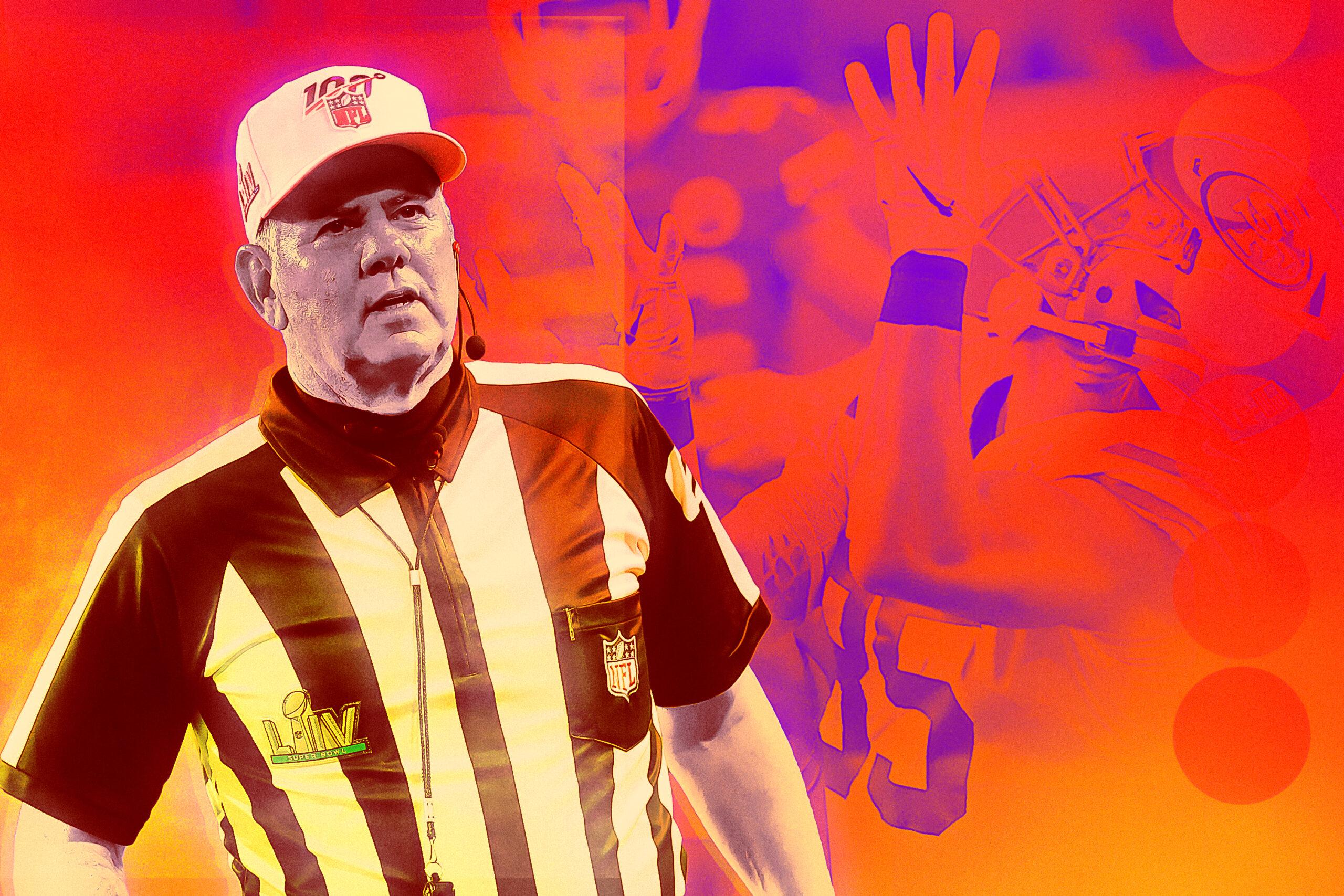
Let’s make a few things clear: The Kansas City Chiefs won Super Bowl LIV 31-20 because they were the better team. The 49ers were not robbed. The referees did not have an agenda and were not incompetent. Any 49ers fans who blame the referees as the primary reason they lost the game needs to grapple with Jimmy Garoppolo’s and Kyle Shanahan’s performances first. Having said that, there were a number of important plays during the game on which penalties occurred—including a few that weren’t called.
The first major penalty came with 14 seconds left in the first half. After Shanahan’s questionable decision to let the clock bleed at the end of the half, the 49ers moved the ball to midfield. Quarterback Jimmy Garoppolo tossed a pass deep to tight end George Kittle, who caught it for a 42-yard gain and well within field goal range with six seconds left. But the play was called back for offensive pass interference. The play would have given the 49ers an easy field goal and a 13-10 lead entering halftime plus the ball to start the third quarter.
Now is probably the time to mention that the head referee for this game was Bill Vinovich, the same person who led the crew in last season’s NFC championship game; that’s the group that missed the pass interference penalty against the Saints that helped send the Rams to the Super Bowl. Vinovich’s crew from that game was not the same as the one in this Super Bowl, but he was the head ref in the game that inspired the NFL to make pass interference reviewable for this season. And when a massive pass interference penalty happened inside the two-minute warning of Super Bowl LIV, once again with Vinovich reffing, it was not reviewed. San Francisco fans may be livid, but the play seemed like textbook offensive pass interference. The first time Kittle put his arm into Daniel Sorensen’s stomach was legal because he did not extend his arm, but when he put his arm on Sorensen’s shoulder and extended his arm it was classic OPI.
“The first [push] was not the extended arm, but the second one was,” rules analyst Mike Pereira said on the broadcast. “If that creates separation and moves the defender back, that is what the back judge is looking for.”
That was a big decision, and probably the correct one. The questions became grayer in the fourth quarter. Up 20-10 with just under 10 minutes to go in the game, the 49ers faced a third-and-14. The referees missed a clear offsides by defensive end Tanoh Kpassagnon.
Kpassagnon caused enough havoc in the backfield to draw a double-team from fullback Kyle Juszczyk, which left defensive end Frank Clark alone one-on-one with the edge. When Clark got in the backfield, he flushed Garoppolo out of the pocket and ended the play. If the referees had thrown the flag, the 49ers would have had a third-and-9, which is still far but much more manageable than third-and-14.
Kansas City fans may be thinking to themselves of other line-of-scrimmage shenanigans. Then-Chiefs (and now 49ers) linebacker Dee Ford lined up offsides in the AFC championship game last season, a sin that was forgiven when the team won on Sunday, but San Francisco may have been guilty of it earlier in the fourth quarter. With the Chiefs down 20-10 and holding the ball at the 49ers’ 27-yard line with more than 13 minutes left in the fourth quarter, 49ers defensive end Arik Armstead clearly lined up across the unofficial blue line that represents the line of scrimmage.
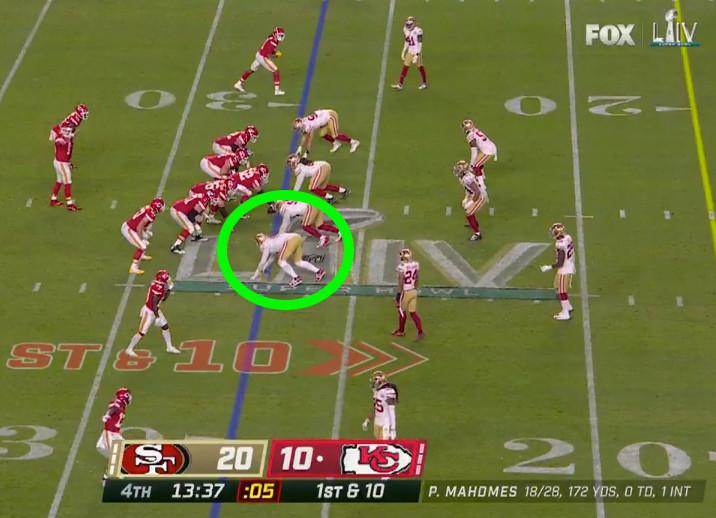
Patrick Mahomes was sacked on the play, and he threw an interception two plays later. Chiefs fans may want to call this tit-for-tat in relation to the later Kansas City offsides (perhaps they were eagle-eyed after the Ford incident scarred them), but the Kpassagnon offsides was much more egregious.
The game’s most important noncall came on the game’s most important play. When the Chiefs were down 10 points and 65 yards from the end zone with just over seven minutes to play, they faced a third-and-15. Mahomes found Tyreek Hill for a 44-yard gain that broke the game open.
“You’ve got to have time in the pocket to make that throw, and he got it,” announcer Troy Aikman said after the play. “I think it was [Nick] Bosa who was coming off the edge to [Mahomes’s] left, but he had time—the line held up.”
The line did hold up, perhaps too well. Left tackle Eric Fisher seemed to have been blocking Bosa and forcing him inside at an unnatural angle on the play. Watch Fisher block Bosa, the topmost 49er in this GIF.
Holding can be called on a lot of plays, and fans don’t want a championship decided by holding penalties. But Bosa had been wreaking havoc on Fisher for most of the fourth quarter, and while this play may not have been egregious, it’s easy to see why 49ers fans may be miffed about it. Kansas City scored a touchdown three plays and one pass interference penalty later to make the game 20-17, but if Kansas City had not converted on that third-and-15 (or been called for holding), the game would have been quite different.
Perhaps the strangest play of all was running back Damien Williams’s touchdown that gave the Chiefs the lead. With 2:51 to go, Williams caught a swing pass on third-and-goal from Mahomes and dipped the ball by the right pylon for the touchdown to take a 24-20 lead.
But it was clear that Williams had stepped out of bounds at almost the same moment he extended the ball into the end zone. Would the Chiefs get the game-winning touchdown upon review? Or would they have a fourth-and-goal just inches away from the end zone? For an event watched by more than a hundred million people, there weren’t many camera angles to figure this out. The angle facing the front of the end zone clearly showed Williams was out of bounds, but offered no depth perception to show whether the ball was in the end zone.
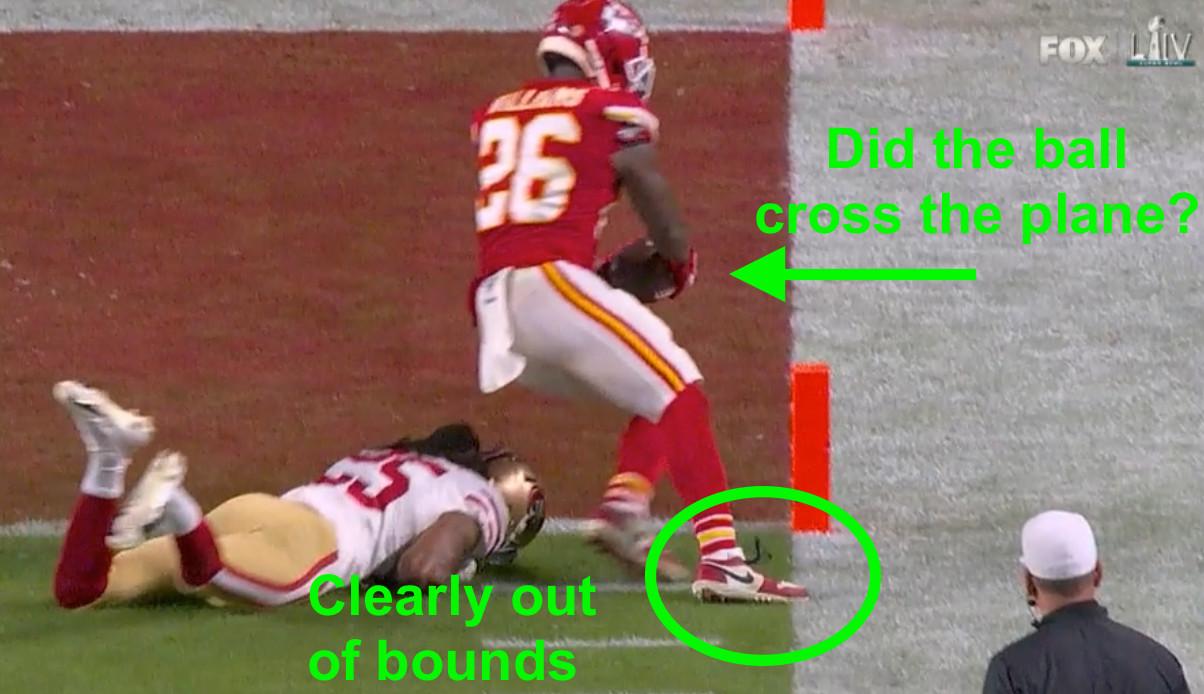
The camera angles from behind the end zone had no depth perception either.
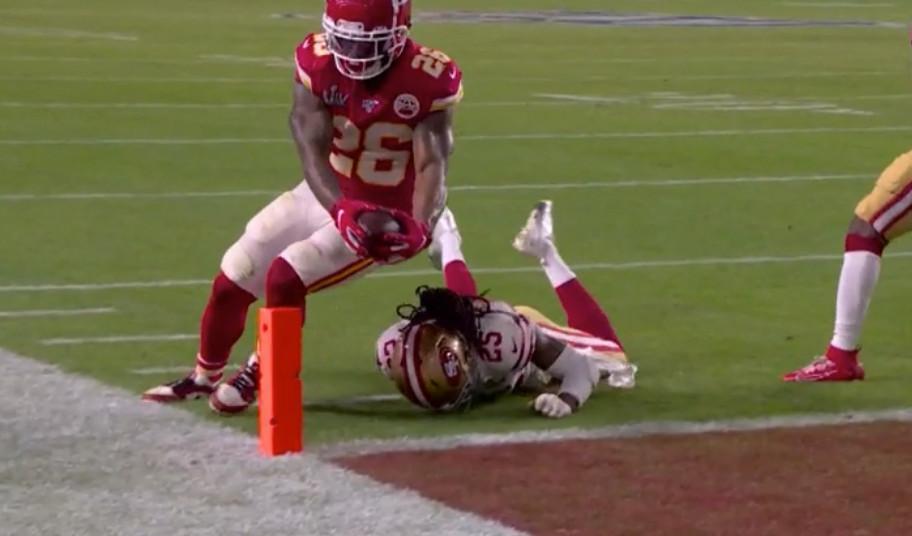
The pylon cam did not even have the ball in the frame. The SkyCam angle was similarly unhelpful. Infuriatingly, one of the sideline end zone angles was not in line with the goal line.
The best angle, from directly along the goal line, shows how close it was.
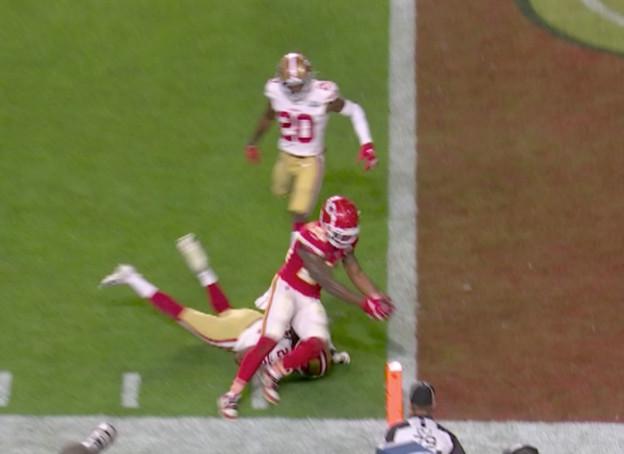
Williams’s foot is clearly out of bounds, and the ball seems millimeters past the goal line. It seems he probably stepped out of bounds before he extended the ball across the plane, but it was a classic example of sticking with the call on the field because there was no definitive answer. Still, it is odd that what was ultimately the winning touchdown in the Super Bowl may not have been a touchdown. Would Andy Reid have gone for it on fourth-and-goal at the 1-inch line to take the 24-20 lead? Would he have kicked the field goal to tie the game? Would the 49ers defensive line have been able to stop them if the Chiefs had gone for it?
We’ll never know, and it doesn’t particularly matter. Maybe Williams didn’t score, maybe Bosa was held on the 44-yard pass to Hill, maybe the Kittle pass interference could have been reviewed, and maybe the Chiefs should’ve been called offsides in the fourth quarter (OK, the Chiefs should’ve been called offsides). But that is a lot of maybes and ifs that still required the 49ers to play well after the fact. Collectively, they suggest the referees preferred to keep their flags in their pockets on the game’s biggest stage and keep replay review to a minimum, which is what most fans want. Perhaps the referees made some mistakes, but the 49ers made far more.

